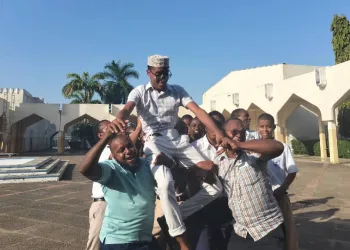The challenge for Deputy President-designate Kithure Kindiki is whether he can unify the restless Mt. Kenya region following the impeachment of its prominent leader, Deputy President Rigathi Gachagua.
Gachagua, hailing from Nyeri, played a crucial role in rallying Kikuyu support for President William Ruto. In contrast, Kindiki, from Tharaka Nithi, was selected by Ruto’s allies to succeed Gachagua but has faced hurdles as Gachagua secured a court order to temporarily block his replacement.
Gachagua’s removal has sparked unrest in the region, particularly in Mt. Kenya West, where residents have expressed their discontent, stating they may reject Ruto in the 2027 elections. “For us, divorcing Rigathi means divorcing the whole Mountain,” remarked Murang’a Senator Joseph Nyutu, reflecting the region’s frustration.
Gachagua represents the populous Mt. Kenya West, which includes counties like Kiambu, Kirinyaga, and Nyeri, while Kindiki comes from the eastern part, encompassing Embu, Meru, and Tharaka Nithi.
This dissent from a region that overwhelmingly supported Ruto poses a significant challenge for Kindiki as he attempts to consolidate support for the President’s re-election and calm the anger stemming from Gachagua’s ousting.
As the highest-ranking official from the region, Kindiki is now Ruto’s key ally in maintaining his support base. Political commentator Elias Mutuma noted Kindiki’s broad acceptability and likability, suggesting he could be a valuable asset for Ruto in unifying not just Mt. Kenya, but the country as a whole.
However, some analysts question Kindiki’s capacity to galvanize the region behind him and the Ruto administration. University lecturer Herman Manyora argued that Kindiki lacks the combative political background needed to diminish Gachagua’s influence. He added that Kindiki faces an uphill battle due to widespread dissatisfaction with Ruto over issues like rising living costs and new taxes.
Moreover, Gachagua’s supporters have branded Kindiki as a “flower girl,” suggesting he is a weaker politician whom Ruto can manipulate. Manyora emphasized that Kindiki will struggle to shake this perception, which has become ingrained in the minds of the people.
Mbeere MP Geoffrey Ruku expressed the growing sentiment of independence among the region’s voters, stating, “Now, we are asserting our independence and will determine our own political and economic future.”
With Kindiki’s appointment, he becomes the first individual from Mt. Kenya East to hold the position of Deputy President. Recently, over 40 MPs from Mt. Kenya East endorsed him as a spokesperson and a bridge between their region and Ruto.
They stated, “Through collaboration and constant dialogue, we are confident that Mt. Kenya East will progressively secure stronger recognition in the national agenda,” highlighting their focus on development issues.
Gachagua, prior to his removal, warned of attempts to divide the region, drawing parallels to the divisive politics of the Moi era, when efforts were made to fracture the unity of Central Kenya’s voting bloc.
In contrast to Gachagua, who entered politics in 2017, Kindiki began his career in 2013 when he was elected as senator for Tharaka Nithi. Known for his thoughtful and fair-minded approach, Kindiki is viewed as competent and effective, albeit not as ruthlessly ambitious as some of his peers.
Re-elected in 2017, he served as the Senate deputy speaker until 2020, when he was dismissed during a purge of Ruto’s allies. After Ruto’s presidential victory in 2022, he appointed Kindiki to his Cabinet. Although Kindiki was briefly removed in July following a cabinet overhaul after protests, he was reinstated due to his capabilities.
During his tenure as Interior Cabinet Secretary, he made strides in countering terrorism in the Rift Valley and managed the government response to protests, which resulted in significant casualties and public outcry. Despite the controversies, he maintained his image as a supporter of the President and a resilient figure within the administration.















